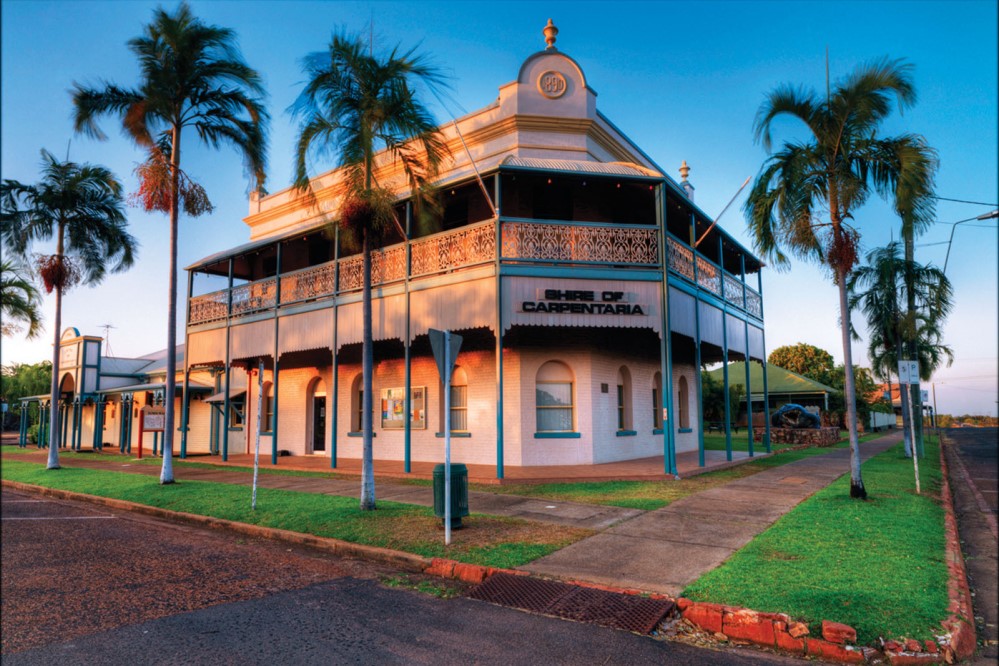
Much like the United States, Australia is a diverse nation of large proportions. Spread across nearly eight million square kilometers of land (about 70 percent of the size of the United States) that ranges from remote desert and regional farmland to forested residential and urban sprawl, local government in Australia serves diverse communities.
As such, responses to the COVID-19 pandemic have been varied by necessity. This has been particularly stark for organizations serving regional and remote communities, as well as those on the peripheries of cities. To make matters more complicated for Australian local government professionals, the coronavirus pandemic has hit amid a stage of recovery from some of the worst natural disasters the country has seen in recent history.
While the rest of the world welcomed the new year with fireworks, Australia battled unprecedented bushfires that ravaged the environment and households across the country, leaving no state untouched. Local governments were on the front lines of supporting those affected and continue in this role, and the pandemic has only exacerbated problems in the recovery effort—both socially and economically. From this starting point, we trace the key issues facing Australian local governments and the communities they serve through the lens of three local governments sitting outside of Australia’s main urban centers.
While responses have been varied, regional and smaller local governments face many of the same broad challenges and successes that are, in many cases, unique to Australia.
Leading Through Disasters
Australian councils, and particularly those in regional areas or even heavily forested areas, have a back catalog of natural disaster experience to draw from in the design of their business continuity plans. These commonly occurring disasters have built resilience into many local governments that face everything from drought to flooding on the one hand to bushfires and cyclones (or hurricanes) on the other. Back in 2014, the shire of Mundaring fought through 21 days of bushfire that burned through nearly 400 hectares (about 988 acres) of land and housing. This experience had readied the council to deal with the current crisis of COVID-19.
Back then, “the whole organisation went into what you might call a war-footing. So we all had that sense of purpose about what we were trying to do and why we were there, and having to think differently and adjust,” says Jonathan Throssell, CEO of the shire.
For context, the shire of Mundaring is a heavily forested area—half made up of state and national parks—located about half an hour from the center of Australia’s most westerly capital city, Perth, in Western Australia. And like many Australian communities, residents are spread out.
“It’s always been a challenge for us in terms of ensuring that we can provide services to a very dispersed population over quite a large land area,” explains Throssell.
While Mundaring’s council services 40,000 spread-out residents, an even smaller council of just over 2,000 residents spread across 65,000 square kilometres (or 25,000 square miles) on the other side of the country is equally no stranger to natural disasters.
The shire of Carpentaria is located on the Savannah Way in North West Queensland in the southeastern region of the Gulf of Carpentaria, an area prone to extreme weather events like cyclones. The leadership team, including CEO Mark Crawley, leaned on the experience and procedures used in dealing with these prior disasters to flip the switch on ready-made response plans to the current crisis.
“Council and the local disaster management group took an early decision to close inward and outward travel to non-essential travelers and we implemented a permit system, so basically members of the public who wished to travel into and out of Carpentaria Shire log onto our website and they can fill out a permit online or they can download the fillable form and apply for a permit,” explains Crawley.
“It’s something that we’ve had in place for cyclone events in the past, so it’s not something that’s brand new because of COVID-19. We’ve had restricted road travel during cyclone events in the northwest and we’ve had a permit system in place for quite a few years.”
“For the pandemic, we added questions to the permit form in relation to health—the typical questions people are asking in relation to COVID-19—like whether you have been overseas or what your plans are in relation to self-quarantining and isolation.”
Protecting Vulnerable Communities
Regional communities with a similar experience of recurring natural disasters have had plans like these ready in the wings, though some communities have been more at risk than others. In the rapid escalation of the coronavirus pandemic, Crawley has had to lead a community with a particularly vulnerable population through uncertainty. In Australia, Aboriginal and Torres Strait Islander peoples and people living in remote communities have been at greater risk from COVID-19 than the average population, with higher rates of health issues, less access to health care, and a heavier reliance on outreach services. As such, restrictions have had to be much quicker and much more severe. However, Australian local governments do not always have the authority to lock down communities, with main arteries going into and out of regional communities typically falling under state government jurisdiction.
These council areas have avoided the brunt of the physical impact of the virus though, and the most vulnerable communities become those that face a real outbreak which have otherwise been few and far between for Australia. On Easter Sunday, the Tasmanian State Government closed two neighboring hospitals in a bid to stem a severe outbreak of coronavirus, isolating 1,000 medical and support staff. This grew to a two-week mandatory isolation of 5,000 residents in the community of Burnie to contain the outbreak.
For context, Burnie is a relatively small coastal city on the northwest coast of Australia’s island state, Tasmania. It is home to about 20,000 people altogether, but quickly became a focal point for media attention with restrictions on movement described as some of the toughest in Australia. While we move past the quarantine period, local governments like this are casting their minds to recovery, with particular pressure facing regional and smaller councils that rely on tourism to see money flow into the local community.
Recovery
Like many coastal cities, tourism is a big part of the local economy in Burnie, and a longer-term concern as the pandemic draws on.
“A massive issue is tourism for Tasmania,” explains Burnie City Council’s General Manager Andrew Wardlaw, “and the early issue with the first restrictions was that tourism just dried up. [Tasmania] was the first to close its state borders, and [since] we’re an island it was probably easier for us to do.”
“But Burnie is a port for cruise ships in Tasmania. As [the pandemic] was escalating, a lot of questions were being asked about cruise ships, and as we come out of the other side of this, cruise ships are obviously going to be a question mark on everyone’s tongues and that’s going to impact us going forward because we were getting around 35 cruise ships a year. That will impact åour local economy because that might change for a few years until that industry rebuilds.”
Financial Pressure
Exacerbating the recovery effort is the hit to council finances on the back of the pandemic. The pandemic has led to closures of community services run by councils across the country, and the financial hit is being felt in all Australian councils, big and small.
“We’ve estimated the cost over six months, and it’s a fair impact for a smaller local authority and the figures would be exponential for our larger metropolitan councils,” says Mark Crawley of Carpentaria.
The bigger financial implications are not yet so evident in the short term at other councils like the shire of Mundaring, but Jonathan Throssell foresees financial stress much longer term, compounding over the next decade.
“What we won’t really know until after the end of the financial year is precisely what the direct cost has been. The principal impact is going to be for the next financial year and beyond,” he explains. “We’re going to have to adjust all our programs over the next ten years because of this one year. We were in a really sound financial position before this—this just smashed us. And it will do for at least a decade. But we’re not on our own there, we know that.”
Aiming for recovery in the community and for the local government organization in tandem is a balancing act that will have long-term implications in the sector. Throssell continues, “So, like many other local governments, our council resolved to direct me to prepare a budget that has no increase to rates fees and charges. But equally, to look at other relief measures [for ratepayers].”
“My overall budget is about $50 million, to provide context. A million and a half dollars we have to find in savings in order to deliver no increase in rates. At the same time, council is also really careful that they didn’t want that to be delivered at the expense of jobs. So we’re having to find a way of delivering services in such a way that won’t increase costs, but will actually reduce them to get to zero. That is in year one, but that then has a compounding effect across our long-term ten-year plan where we will face a gap of over $8 million that we’re going to have to find at the end of this in year ten.”
There are many more issues facing local government in Australia amid the pandemic, and while overall themes do seem to emerge, the most poignant is how particular and unique many issues seem to be for each region and each type of local government.

You can join LG Professionals Australia for intimate conversations with local government leaders across this spectrum as they grapple with the challenges of managing the COVID-19 pandemic on the weekly podcast, Local Government COVID-Cast.
New, Reduced Membership Dues
A new, reduced dues rate is available for CAOs/ACAOs, along with additional discounts for those in smaller communities, has been implemented. Learn more and be sure to join or renew today!
